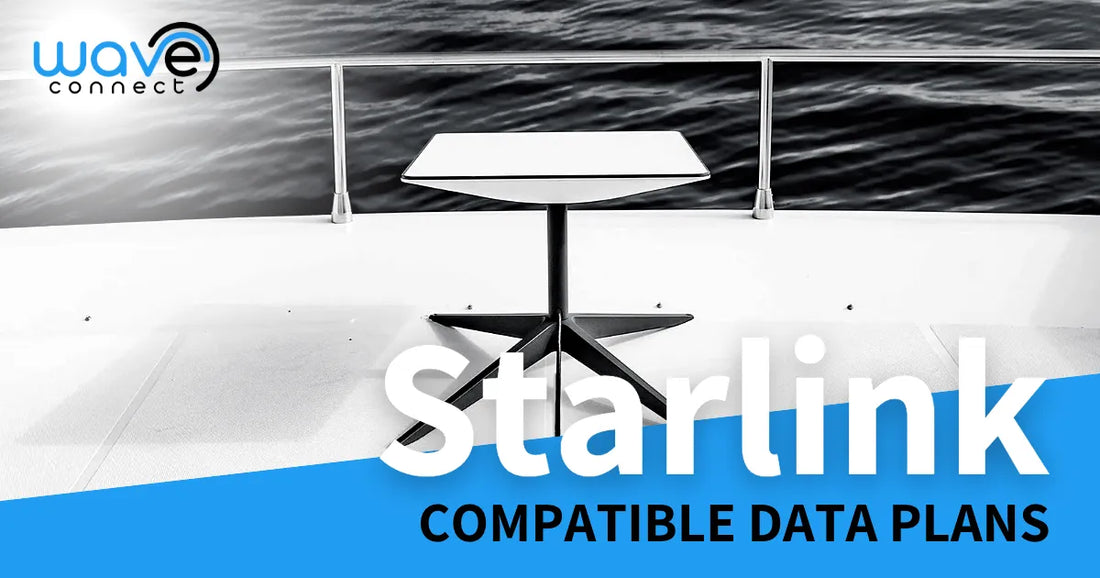Starlink: The newest maritime-compatible data plans

With the continuing digital transformation of the maritime industry, there is a growing demand for faster and more reliable digital services. The increasing use of smartphones, tablet computers, HD and 4K streaming, as well as other mobile devices, has also led to an increase in bandwidth usage. This has raised concerns over network capacity and connectivity. Given these circumstances, data plans have become an important topic of discussion among IT professionals in the maritime industry. Let’s take a closer look at Starlink: The newest maritime-compatible data plans.
What is Starlink?
Starlink is a new maritime data service that is poised to become the next generation of maritime communications. For decades, mariners have been using the Inmarsat and similar satellite satellites for their voice, data, and video services. Now, the maritime industry is looking to an alternative communication solution that offers more services, higher bandwidth, and lower costs. Starlink is the newest maritime satellite communications network that is set to be fully operational by the end of 2022 (although this target looks unlikely at the time of writing this article). The network as of September 2022, has over 2,300 functioning Starlink satellites in geostationary orbit, other ground network equipment (ground stations), and terminal devices. The new communications network is expected to provide faster broadband, higher capacity data services, and reduced costs.
Why is Everyone Talking About Starlink?
The maritime industry has been waiting for next-generation satellite communications for a long time. The launch of the first Starlink satellite was initially expected to take place in 2015. However, the project was delayed due to a number of factors, including Falcon 9 rocket failures in 2015 and 2016. After more than two years of delays, the first Starlink satellite was finally launched on May 23, 2019. And with this, the maritime industry has turned its attention to Starlink and its potential to transform maritime communications.
How Will Starlink Benefit the Maritime Industry?
The Starlink network is expected to benefit the maritime industry in a variety of ways. Some of the key benefits include:
- Higher Capacity: The Starlink network is expected to deliver 100 gigabits per second. This is a five-fold increase compared to the capacity of the current Inmarsat network. Capacity concerns are likely to become a thing of the past.
- Better Connectivity: The Starlink network is expected to provide more coverage. This means that mariners will have improved connectivity even in remote areas.
- Better Coverage: The Starlink network is expected to provide coverage in the Northern Sea Route, the Mediterranean Sea, the Pacific Ocean, and the Caribbean Sea. This means that mariners will be able to enjoy Starlink connectivity in all the main waterways.
- Lower Cost: The Starlink network is expected to be less expensive than the current Inmarsat network. This is due to a reduction in terminal costs, recurring bandwidth fees and fewer maintenance requirements.
Starlink Plans and Pricing
Starlink Maritime is taking on the speed problem, saying it can provide customers with up to 350 Mbps. But with a monthly price of $5,000 and a one-time hardware fee of $10,000 for the dual terminals you’ll need, it’s not exactly more accessible. Though consumers do have the option to pause and unpause the plan and only be billed for the months they use.
Starlink coverage
Starlinks parent company, SpaceX, claims Starlink Maritime “allows you to connect from some of the most remote waters in the world,” but current coverage area is limited to coastal waters in Australia, Brasil, Chile, Europe, New Zealand, and North America (mostly the USA). This becomes a great option if cruising the Mediterranean, but trans-ocean ships may lose connectivity quickly after leaving port. Coverage details should be taken with a grain of salt however, since maritime Starlink Facebook groups such as Starlink on Boats provide evidence of Starlink coverage well outside of these zones.
What are Starlink-compatible data plans?
With the benefits of faster connectivity and reduced cost, Starlink will inevitably be used as the primary internet connection for many vessels. Backup connectivity is always recommended, and this connectivity will be in the form of cellular and alternate satellite connections. "Starlink-compatible", a phrase coined by the minds at Wave Connect, signal that backup connectivity is available to complement Starlink services.
Let’s take an example of a yacht cruising the Mediterranean for the season. The primary connection would be Starlink Maritime. The secondary (backup) connection would be a 4g/5G router with pay-per-GB SIM card. The backup connection is available at any time but is only billed should the connection be used. If no data is used, there is no additional connectivity bill to pay. The pay-per-GB SIM card, therefore, is Starlink-compatible.
On the other end of the SIM card spectrum are data bundles. Paying a monthly recurring fee for unused data is not a good solution and would be considered not to be Starlink-compatible.
Starlink-compatible services are only available from a selection of companies, and for good reason. Many data providers cannot provide pay-per-GB because of:
- Complex requirements
- Low profit margins
- No steady recurring income
- Financial risk is high without the correct type of card
Maritime data SIM providers that only supply bundled data (for example a 500GB bundle or unlimited plan) are unable to provide these Starlink-compatible plans due to complex requirements. A Starlink-compatible data supplier must be able to provide:
- An IoT solution to ensure no additional out-of-zone charges
- Multi-network connectivity to ensure the best possible connection
- Pay-per-GB / pay-as-you-go to ensure the vessel is only charged when the data is used
The Bottom Line
The launch of new Starlink Maritime plans is a major milestone in the maritime industry. It signals the beginning of a new era of maritime communications. The new communications network will provide faster broadband, higher capacity data services, and reduced costs. The Starlink network is expected to benefit the maritime industry in many ways and the digital transformation of the maritime industry is expected to continue in full swing. Complementing Starlink Maritime services with pay per GB data plans and SIM cards to provide true Starlink-compatible products is only possible for companies that specialise in multi-network IoT cellular connectivity due to the complex requirements. Wave Connect has been providing such services to all major sectors including maritime for a number of years, and welcomes Starlink Maritime as an excellent alternative to current connectivity options.

